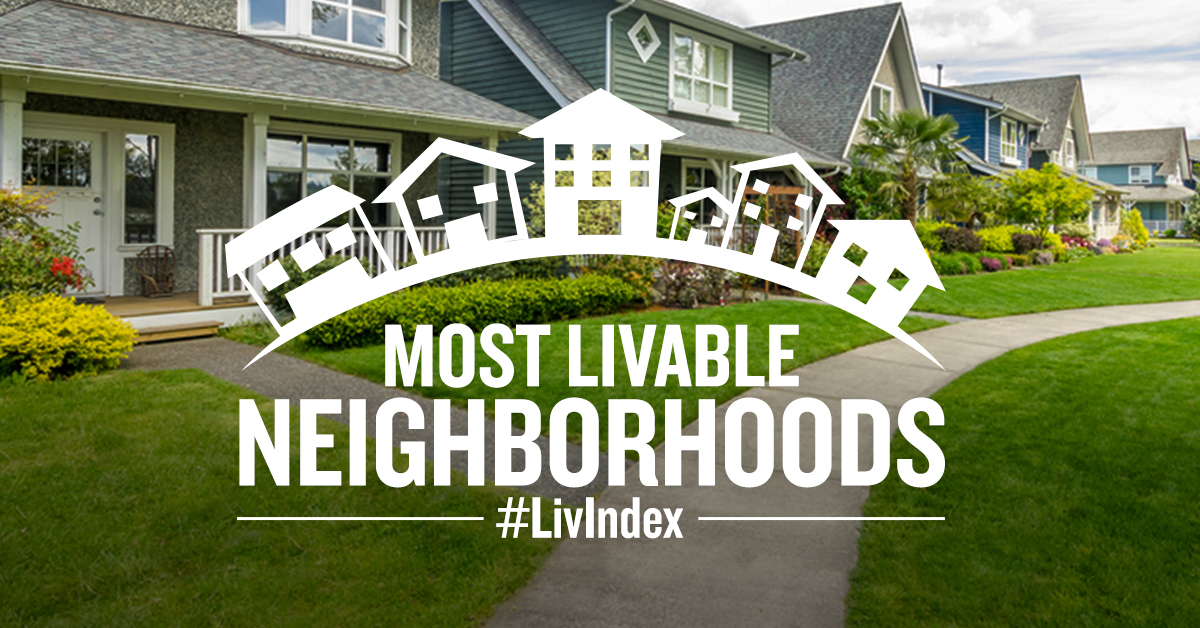AARP Hearing Center

The AARP Public Policy Institute has launched the AARP Livability Index, a first of its kind resource that allows people to determine how well their communities are meeting their current and future needs. People, policymakers and the private sector can use the Livability Index to measure how their location – down to the neighborhood level – rates across a comprehensive range of metrics that reflect user friendliness, and customize their search based on their own priorities.
In an exclusive feature, the May issue of AARP Bulletin uses the Livability Index to identify the most livable places in the country to live for people 50-plus. The AARP Bulletin feature, which can be read at www.aarp.org/mostlivable2015, includes the 10“Most Livable Neighborhoods” in the country, including Downtown Crossing in Boston, a shopping district in transition to more mixed use with high-rise residences. Adjacent to Boston Common, the Theatre District, and Financial District, Downtown Crossing is within walking distance of three mass transit stations. New York City's Upper West Side is another “Most Livable Neighborhood,” which despite its expensive housing offers a multi-generational and walkable community with great restaurants, world-class culture, cheap and convenient mass transit, as well as easy access to gyms and Central Park jogging paths. AARP Bulletin crunched the numbers to identify places where it’s great – not glitzy – to live.
AARP defines a livable community as one that has affordable and appropriate housing, supportive community features and services, and adequate mobility options, which together facilitate personal independence and the engagement of residents in civic and social life. It’s a place where people can get to where they want to go, living comfortably and in good health, and being able to remain active and engaged. Importantly, the elements that make a community livable are useful for people of all ages, not just Americans 50-plus."
“Whether you’re a city planner or a person who wants to improve your life, it’s important to know what you have, what you’ll need, and then plan accordingly,” said Dr. Debra Whitman, AARP Chief Public Policy officer. “Every community has areas where it can improve and the Livability Index provides the tools and resources to help people meet their needs and wants.”
AARP defines a livable community as one that has affordable and appropriate housing, supportive community features and services, and adequate mobility options, which together facilitate personal independence and the engagement of residents in civic and social life. It’s a place where people can get to where they want to go, living comfortably and in good health, and being able to remain active and engaged. Importantly, the elements that make a community livable are useful for people of all ages, not just Americans 50-plus.
The AARP Livability Index, available at www.aarp.org/livabilityindex, was designed to provide the best basis for comparing localities across the nation by dozens of experts at the AARP Public Policy Institute and elsewhere. Aided by a national survey of 4,500 Americans 50-plus about the aspects of their communities most important to them, these experts selected 60 factors spread across seven categories: housing, neighborhood, transportation, environment, health, engagement, and opportunity. For example, the “Transportation” category includes metrics on the frequency of local transit service, traffic congestion and crashes, and household transportation costs.
Having your doctor, a grocery store, or favorite restaurant a half-mile away doesn’t mean much if you can’t get there. We all have a role to play in developing the public, private, and personal solutions needed to keep our communities as vibrant as the people who live there.” - Dr. Debra Whitman, AARP Chief Public Policy officer

Users can also incorporate their own preferences by changing the weights of how different components are scored. Taken together, the AARP Livability Index, which uses more than 50 national sources of data, provides the clearest picture yet of how well a community meets the current and future needs of people of all ages.
In addition to the “Most Livable Neighborhoods” list, AARP Bulletin also reports the best cities – of all sizes – that meet a few key priorities of Americans 50-plus. For example, using the Livability Index’s culture, arts and entertainment factors, AARP Bulletin “Best Cities for Date Night,” which include Nashville, TN; Richmond, VA; and Brentwood, TN. AARP Bulletin also released lists that include “Best Cities for Making New Friends,” and “Best Cities for Staying Healthy.” Notably, San Francisco, CA; Buffalo, NY; and Hoboken, NJ were listed as easiest cities to get around. Best cities for making new friends included Washington, DC; Sioux Falls, SD; and Rapid City, SD. Finally, best cities for staying healthy included San Francisco, CA; Arlington, VA; and Novato, CA.
The arrival of the AARP Livability Index will be particularly important in the coming years to address the changing needs and wants of this country’s aging population. According to AARP research, nearly eight-in-ten Americans 50-plus want to stay in their current homes and communities as they age; U.S. Census figures show that the overwhelming majority of them choose to do so. The AARP Livability Index can be a powerful tool for local officials and others in adapting their cities so that residents of all ages can stay healthy and active.
“Having your doctor, a grocery store, or favorite restaurant a half-mile away doesn’t mean much if you can’t get there,” added Whitman. “We all have a role to play in developing the public, private, and personal solutions needed to keep our communities as vibrant as the people who live there.”
For more information, please visit www.aarp.org.































































